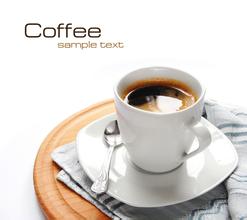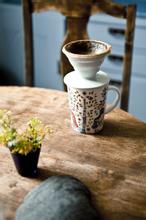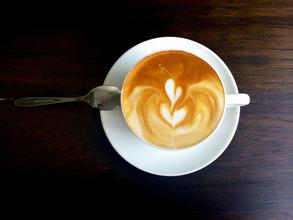Introduction to the special and elegant Mexican coffee flavor and taste of the fine coffee in the manor area.
The Olmec civilization (Olmec) is the oldest known American civilization. It existed from about 1200 BC to 400 BC and is located in the rainforest of what is now south-central Mexico and is famous for its large head statues.
The Olmec civilization was born in the tropical jungles of the San Lorenzo Highlands of Central America around 1200 BC. San Lorenzo, the center of the early Olmec civilization, flourished for about 300 years and was destroyed by violence around 900 BC. The center of the Olmec civilization then moved to Raventa near the Gulf of Mexico. The Olmec civilization finally disappeared around 400 BC and was replaced by the Abbey Olmec culture. The exact reason for its disappearance is not known, but it has affected a large number of Central American civilizations. Many features of the Olmec civilization, such as the construction of pyramids and palaces, jade carving, jaguar and serpent worship, were also common elements of later Central American civilizations. Most scholars believe that Olmec civilization is the matrix of Mayan, Sapottek, Tiotihuakan and other civilizations. But others believe that the relationship between the Olmec civilization and other Central American civilizations was sisterhood in 1519, when the Spaniards invaded Mexico and in 1521 the Aztec capital Tenochtitl á n was conquered by the Tlaxcalteca, the main enemy of Spain and Aztec. But Spain did not completely conquer Aztec, but completed it two centuries later. There were two main reasons why the Spanish won the Mexican-American War from 1846 to 1848. The reason for the war was because of the relationship between the independence of Texas (now the United States) and American expansionism, the United States absorbed the Republic of Texas as the 28th state, and attacked Mexico's distant California and New Mexico. After the war, Mexico lost 1/3 of its original territory, causing Mexicans to still hate Americans and create a new politician who got rid of San Anna's rule over Mexico and established a free republic in 1857.
Mexicans are enthusiastic and optimistic, and the chocolates in Mexican coffee perfectly reflect this. There are different methods of Mexican coffee, but the main difference is whether it contains alcohol or not. let's first introduce the practice of non-alcohol.
Heat a cup of milk, a teaspoon of cinnamon powder and a teaspoon of vanilla powder in a pot. Keep it at medium temperature. The heat is not too high. The milk must not boil. Then add the cocoa powder, fully dissolve and stir well. If you are particularly fond of chocolate, you can use chocolate paste instead of cocoa powder and milk.
Let the milk dry for about 5 minutes, wait until the milk is slightly cool, then pour into the prepared coffee, decorate the coffee surface with cold cream, then decorate with a piece of cinnamon, and the Mexican coffee is ready.
The aromas of chocolate and cinnamon blend together to give off the smell of desert. Tasting such a cup of coffee, you seem to be walking through the gray-green cactus in the Mexican desert.
The most famous alcoholic drink in Mexico is tequila (Tequila). When Mexicans drink tequila, they lick a little salt on the tip of their tongue and then swallow the wine in a small glass. Tequila is a strong wine, the Mexican coffee made by adding this wine is very good, if you have enough courage, you might as well give it a try.
Tequila Mexican coffee and non-alcoholic Mexican coffee is basically true, but first pour a small cup of tequila at the bottom of the cup, followed by milk and coffee, preferably decorated with cream and cinnamon beans: Mexico Aldu Mara. Taste characteristics: large particles, with a strong sweet, sour taste and good aroma. The best barbecue degree: medium fried or body fried. It is characterized by a smooth taste, high acidity, medium mellowness and a slightly nutty finish. Sweet, sour and bitter are neutral, moderately sour, special and elegant. Although the professionalism of Brazilian coffee is of little value, it is very suitable for blending. Because of the huge production of coffee, the price is not very expensive. Mexicans are enthusiastic and optimistic, as reflected by the chocolate in Mexican coffee. There are different methods of Mexican coffee, but the main difference is whether it contains alcohol or not. let's first introduce the practice of non-alcohol. Heat a cup of milk, a teaspoon of cinnamon powder and a teaspoon of vanilla powder in a pot. Keep it at medium temperature. The heat is not too high. The milk must not boil. Then add the cocoa powder, fully dissolve and stir well. If you are particularly fond of chocolate, you can use chocolate paste instead of cocoa powder and milk. Let the milk dry for about 5 minutes, wait until the milk is slightly cool, then pour into the prepared coffee, decorate the coffee surface with cold cream, then decorate with a piece of cinnamon, and the Mexican coffee is ready. The aromas of chocolate and cinnamon blend together to give off the smell of desert. Tasting such a cup of coffee, you seem to be walking through the gray-green cactus in the Mexican desert. The most famous alcoholic drink in Mexico is tequila (Tequila). When Mexicans drink tequila, they lick a little salt on the tip of their tongue and then swallow the wine in a small glass. Tequila is a strong wine, the Mexican coffee made by adding this wine is very good, if you have enough courage, you might as well give it a try. Tequila Mexican coffee and non-alcoholic Mexican coffee is basically true, but first pour a small cup of tequila at the bottom of the cup, and then pour in milk and coffee, preferably decorated with cream and cinnamon

Important Notice :
前街咖啡 FrontStreet Coffee has moved to new addredd:
FrontStreet Coffee Address: 315,Donghua East Road,GuangZhou
Tel:020 38364473
- Prev

Costa Rican Yersalo coffee with unique aroma and strong taste
1502 C. Columbus discovered the Costa Rican coast on his fourth voyage. Since then, Spanish settlers have invaded many times. Cartago City was built in 1563, Costa Rica became a Spanish colony and was placed under the jurisdiction of the Governor General of Guatemala. During colonial rule, under the cruel slavery and oppression of Spanish colonists, the Indians were almost wiped out, and there was very little labor available for slavery.
- Next

Introduction to El Salvador Himalayan Coffee Manor with mild sour, bitter and sweet taste
El Salvador's domestic topography is mainly mountainous, plateau, volcanic, known as the country of volcanoes, Santa Ana active volcano 2385 meters above sea level, the highest peak in the country; the northern part of the country is the Lompa Valley and the southern part is the narrow coastal plain. El Salvador has a tropical climate with an annual average temperature of 28 ℃. November-April is the dry season and May-October is the rainy season. The coastal and lowland climate is hot and humid, with mountains.
Related
- Detailed explanation of Jadeite planting Land in Panamanian Jadeite Manor introduction to the grading system of Jadeite competitive bidding, Red bid, Green bid and Rose Summer
- Story of Coffee planting in Brenka region of Costa Rica Stonehenge Manor anaerobic heavy honey treatment of flavor mouth
- What's on the barrel of Blue Mountain Coffee beans?
- Can American coffee also pull flowers? How to use hot American style to pull out a good-looking pattern?
- Can you make a cold extract with coffee beans? What is the right proportion for cold-extracted coffee formula?
- Indonesian PWN Gold Mandrine Coffee Origin Features Flavor How to Chong? Mandolin coffee is American.
- A brief introduction to the flavor characteristics of Brazilian yellow bourbon coffee beans
- What is the effect of different water quality on the flavor of cold-extracted coffee? What kind of water is best for brewing coffee?
- Why do you think of Rose Summer whenever you mention Panamanian coffee?
- Introduction to the characteristics of authentic blue mountain coffee bean producing areas? What is the CIB Coffee Authority in Jamaica?

